Carlos Aguirre at the Museum of Modern Art, Mexico City
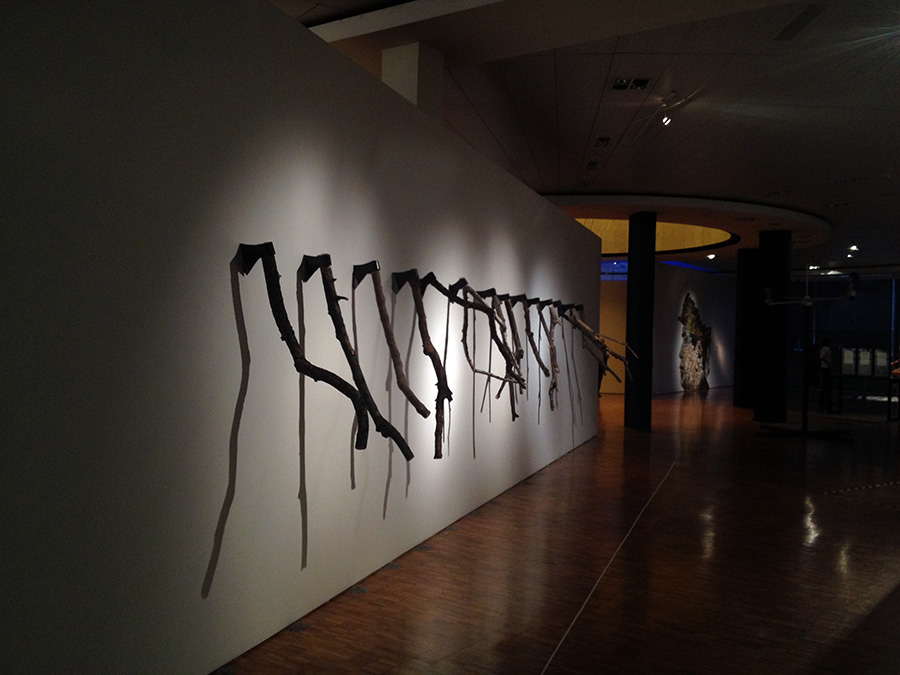
Between the Museo de Arte Moderno and Museo Universitario Arte Contemporanea (MUAC) there was a great deal of Carlos Aguirre (Acapulco, Mexico 1948) to take in this past month in Mexico City. “Zona de Riesgo” was the retrospective of the artist’s work from 1979 to 2014 installed at Mexico City’s Museum of Modern Art. The show was excellent and an amazing overview of an incredibly active artist. In general the exhibition is dark, even macabre as Aguirre appears to be driven by the violence of Mexico from the execution of criminals to excessive contamination.
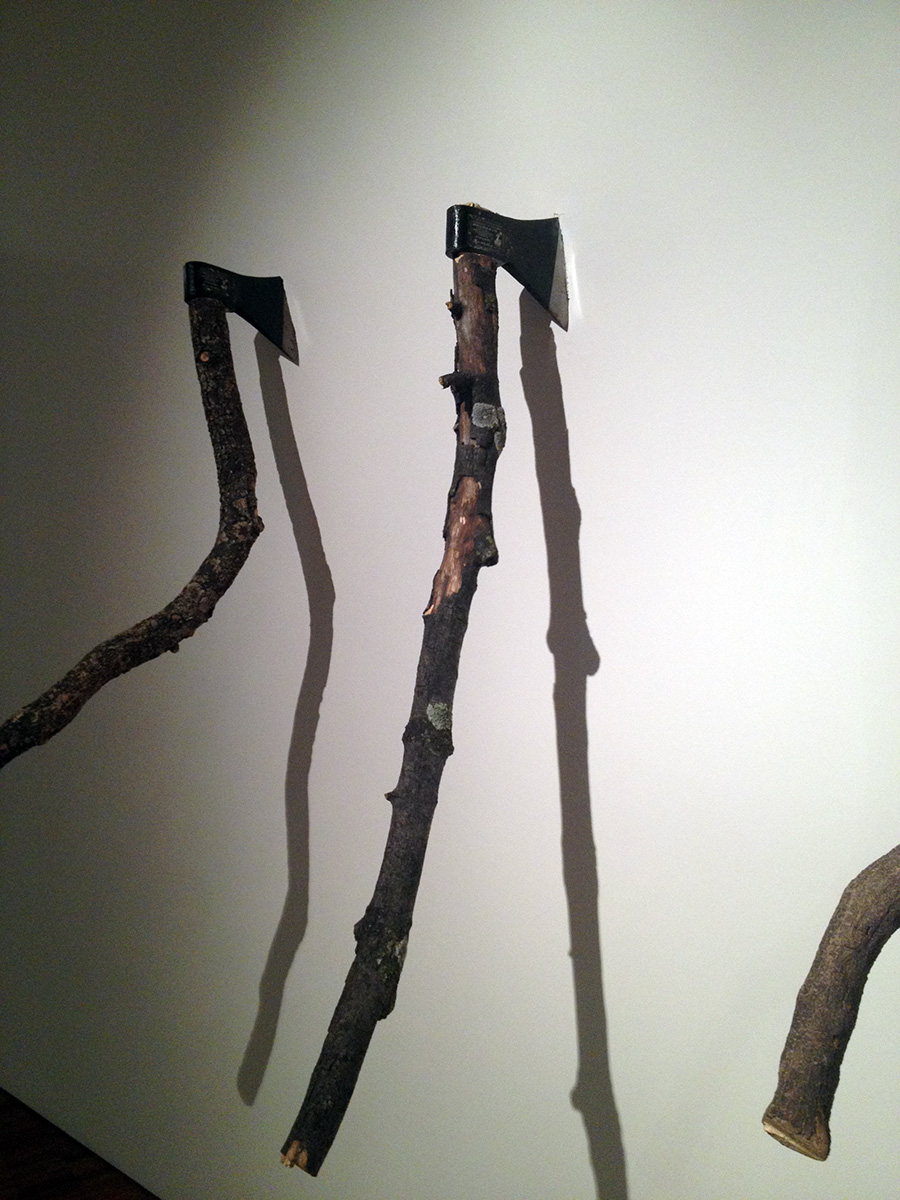
Upon entering the multi-gallery exhibition, one is greeted by a line of axes cleaved into a white wall. The blades of the axes are mounted on to branches, a powerful transformation of the ax that reminds the viewer of the violent nature of deforestation. In the early 1990s, Aguirre visualizes environmental impact with objects that may not be ignored such as blackened human lungs split open and cast in clear material hanging over a box filled with carbon.
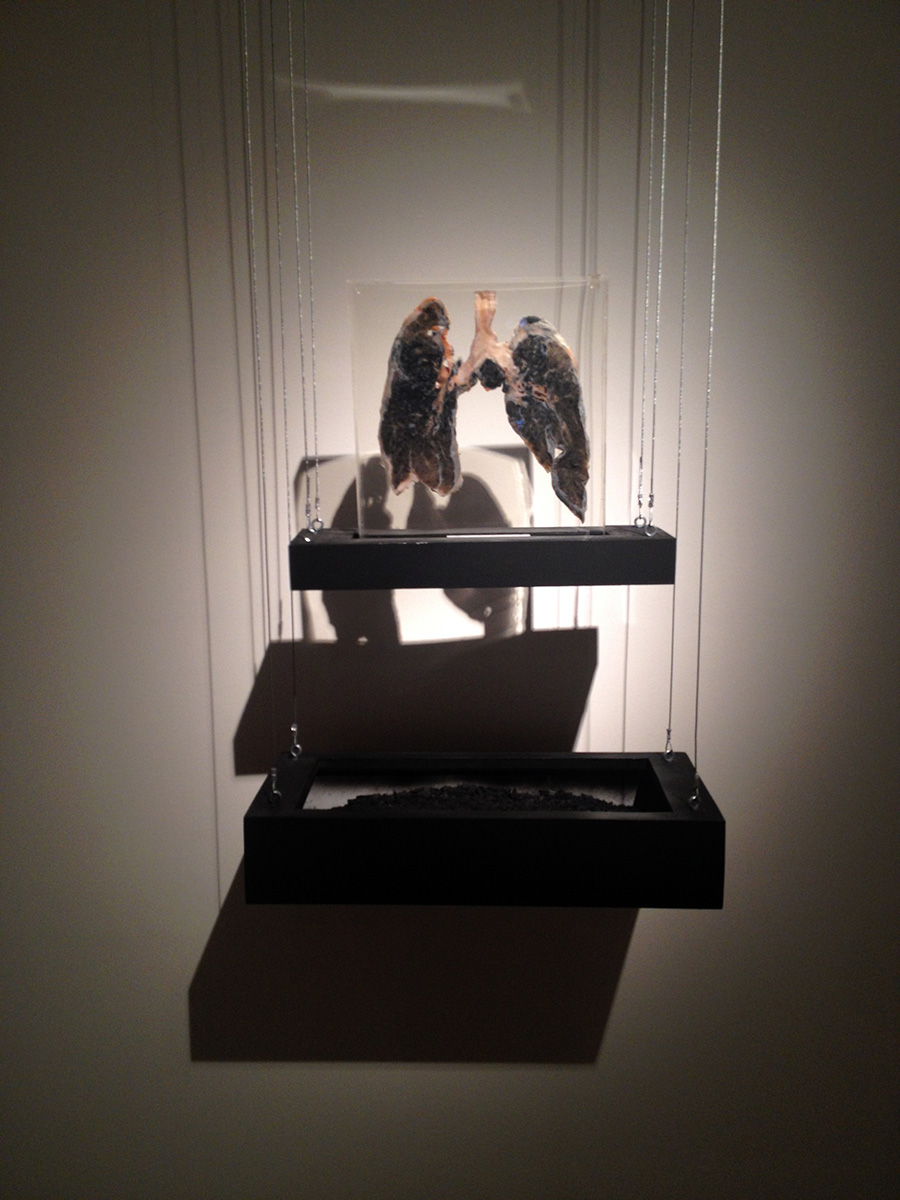
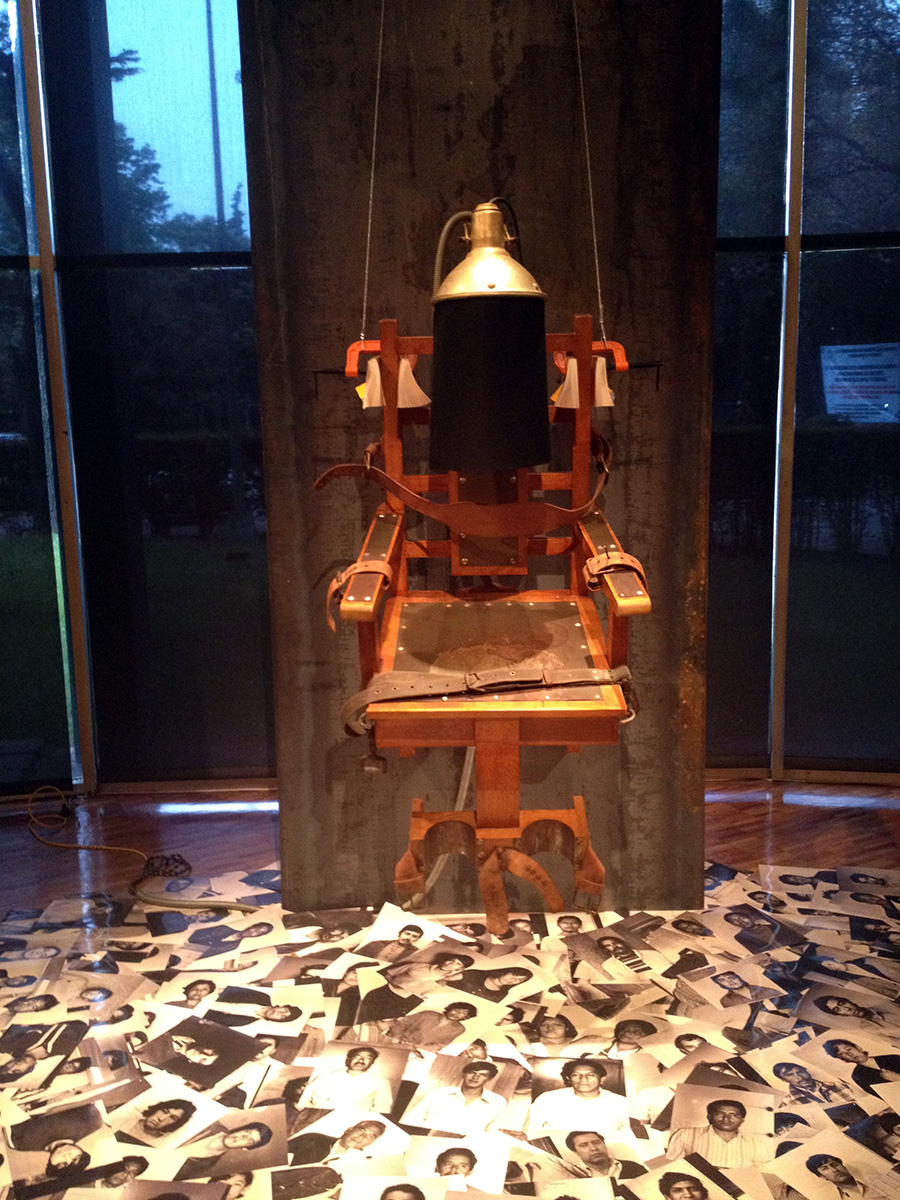
In the next gallery hangs an electric chair and below it the portraits of those executed. Near by is “Los olvidados” (1990), a giant portrait of a man in profile constructed from work gloves used by laborers.
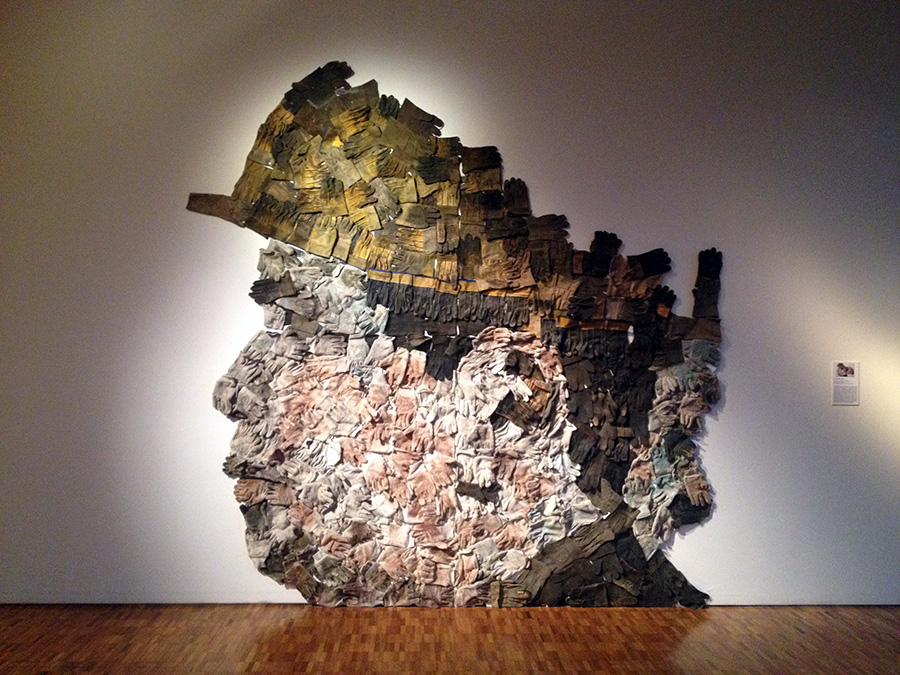
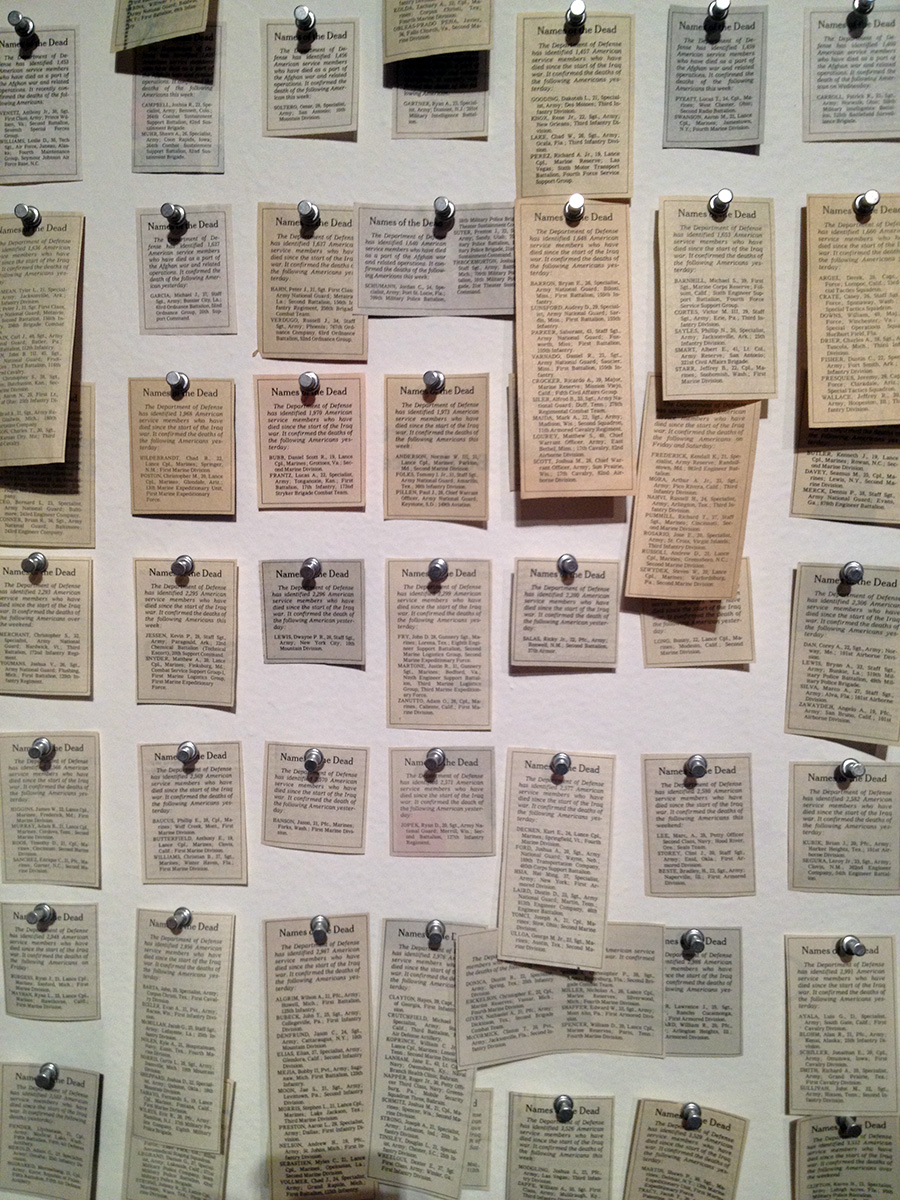
As I continued through the exhibition, I was drawn to a grid of small newsprint cutouts pinned to a wall. It was “Name of Dead” 1139 obituaries carefully cut out and posted to the gallery wall. The various galleries are joined by a large circular and domed area where “Dialectica, inteligencia vs. poder” (1995) is suspended. The piece is composed of many fire extinguishers hanging at various heights and at the center hanging at the end of a metal bar are a human brain and a small bust of Gustavo Díaz Ordaz, the president during the Tlatelolco massacre of 1968 when hundreds of unarmed protestors were shot.
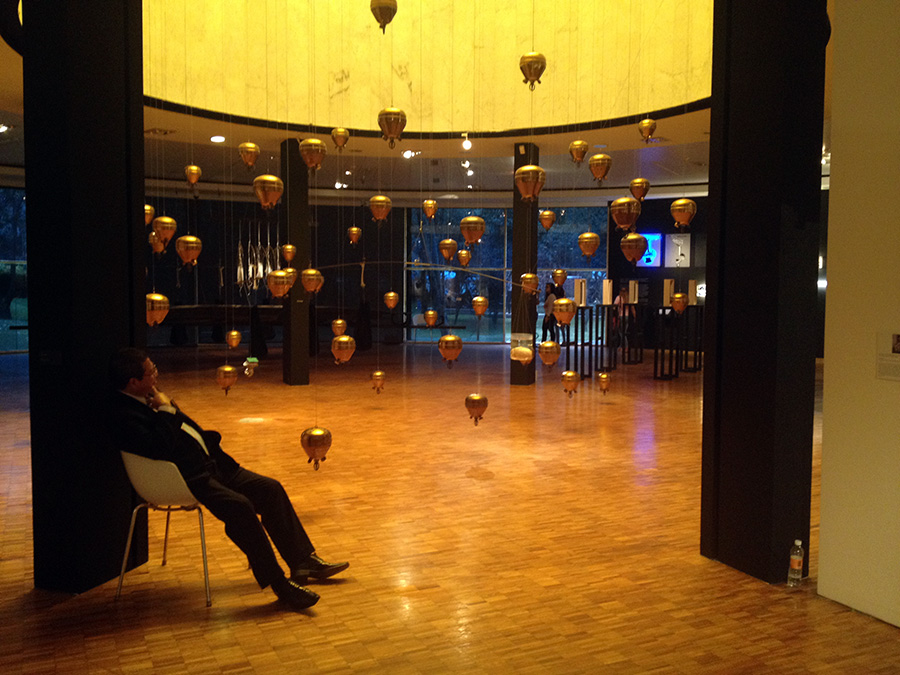
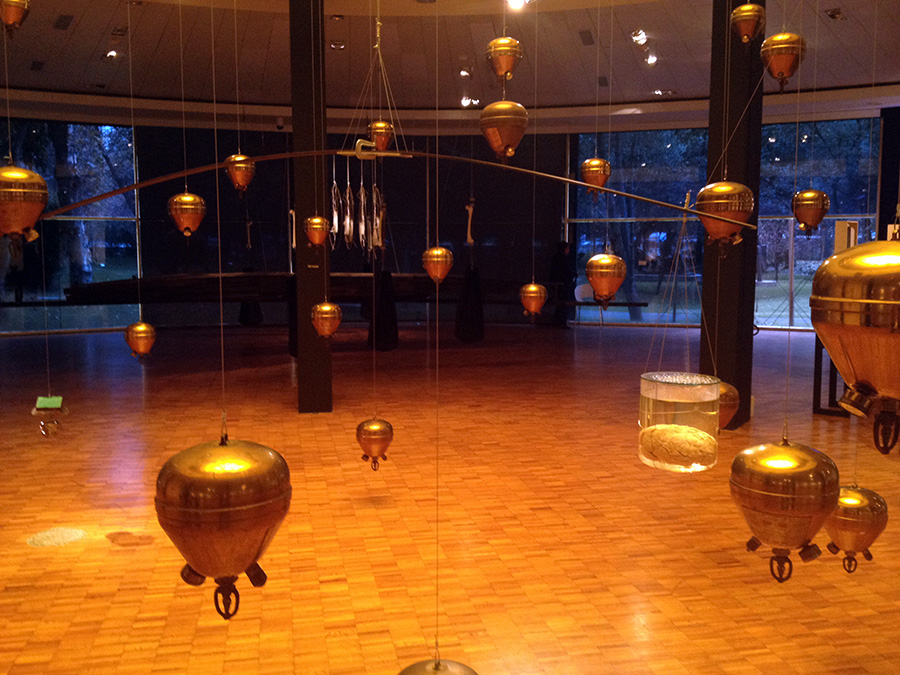
Beyond “Dialectica, inteligencia vs. poder” lies a dirt rectangle upon the floor and above the dirt are many shovels placed upon a wooden structure. When the dirt is inspected one will find human teeth and bones as well as corn.
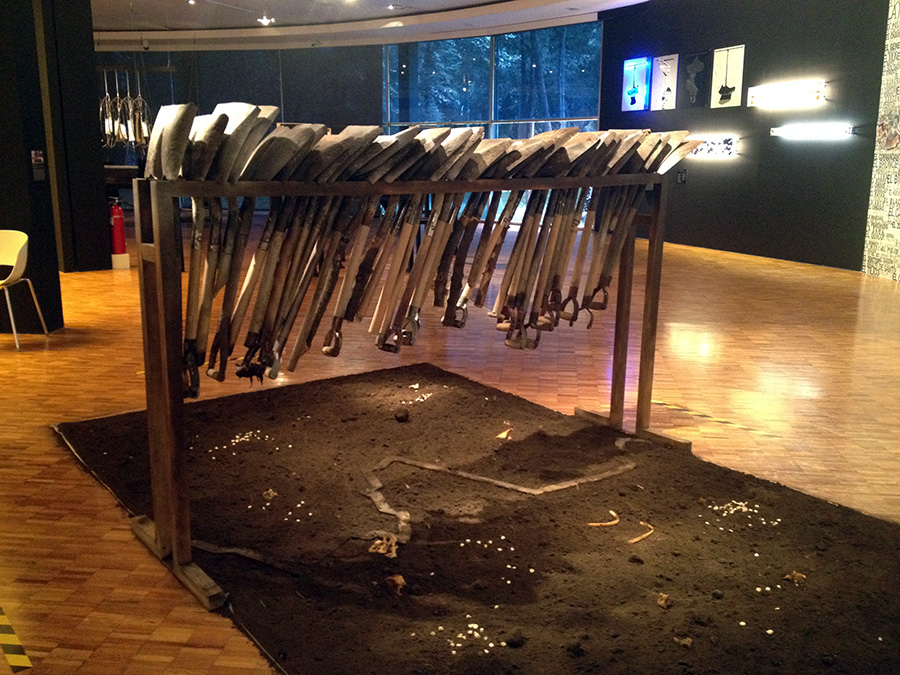
One of the final pieces in the exhibition is a black priest’s robe embroidered with 200 names of victims sexually abused by priests when the victims were children.
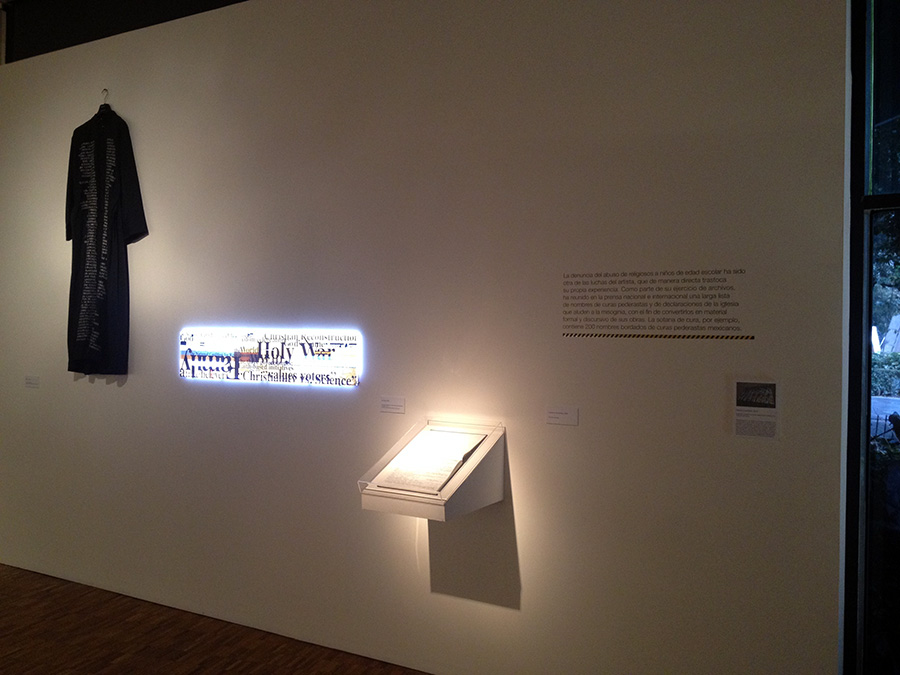
There is not much nuance in the visual metaphors constructed by Carlos Aguirre, instead the work is direct and confrontational. He makes it difficult to ignore the dark realities of our culture, Mexico’s reality is one giant risk zone or zona de riesgo.
At MUAC there is a large retrospective of the artist collective Grupo Proceso Pentágono in which Carlos Aguirre played a role during a period of time. For this exhibition, Aguirre rejoined the group to create a critique of the 43 missing students who disappeared on the night of September 26th 2014.